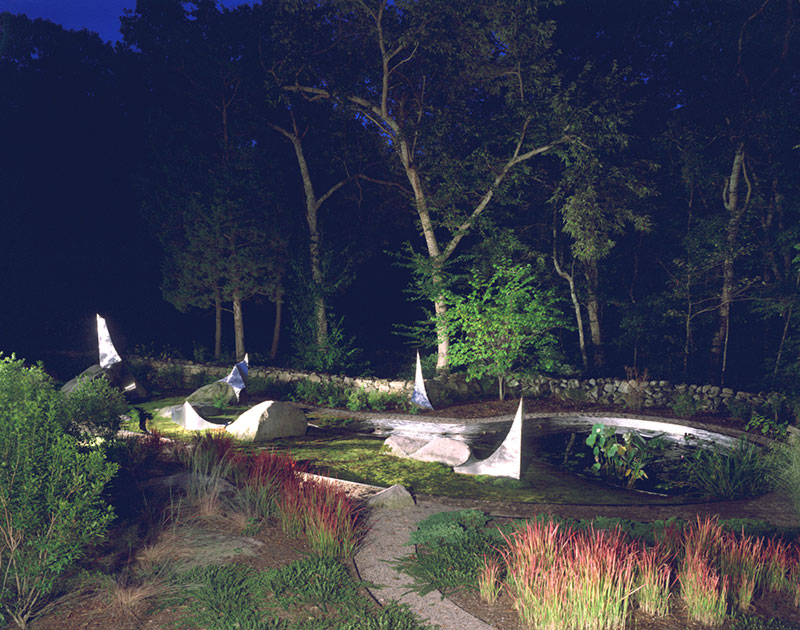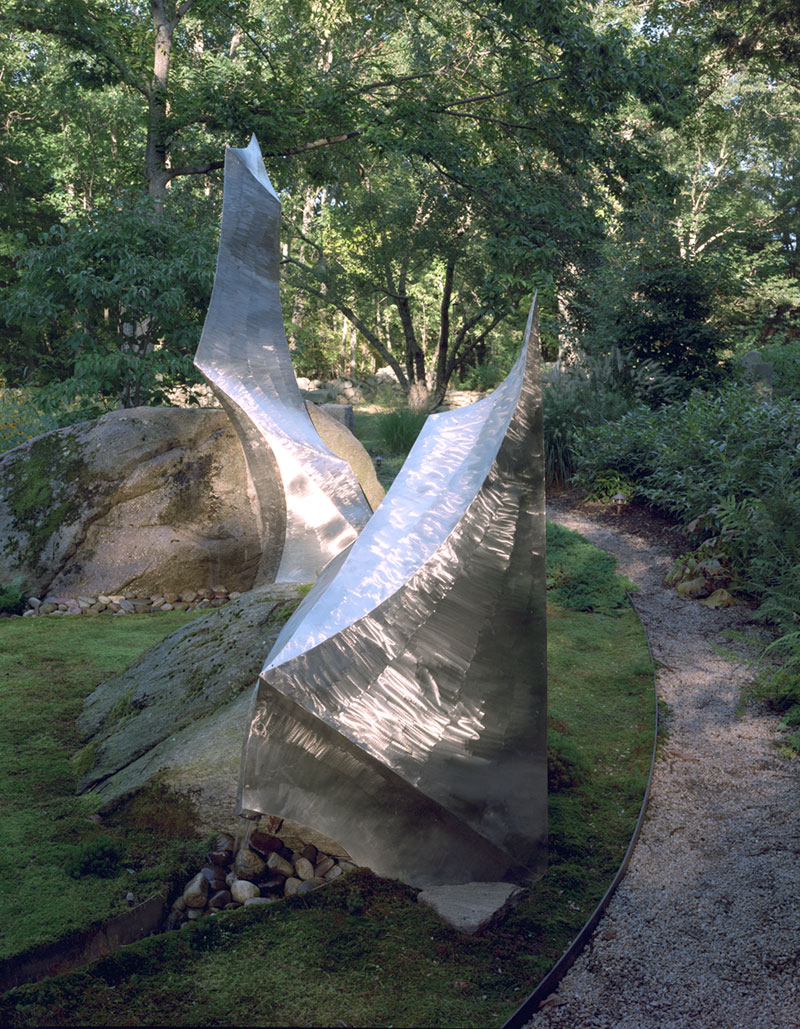Relictuary
The root word of the title of this piece– relict– is to be distinguished from its close cousin ‘relic’, despite their sharing common etymological ancestry, the latin ‘reliquere’.
More InformationIn geology, a relict is ‘a physical feature, mineral, structure etc. remaining after other components have wasted away or been altered’. In the life sciences, similar thinking applies to species, enduring in ‘refugia’, or isolated habitat remnants. The primary intellectual basis for this piece revolves around the glacial nature of the site and its environs.
The boulders are erratics, or rock masses transported by the ice of the last glaciation. In this context, the stainless elements are intended as a fantasy suggestion of the last of the receding ice that placed the boulders in their present position; the rivulets emerging from the granite / metal interface metaphorically refer to meltwater streams.
However, it is also intended that references do not stop there. The title’s thinly veiled reference to the religious term ‘reliquary’– with its attendant overtones of reverence, humility, and most importantly, moral content, is entirely deliberate. The careful treatment of the entire site, including the plantings, walkways and so on, has some of these hints, and the metal structures are intended to reinforce these, referring by means of suggestions of ‘enclosure’ to early outdoor sacred sites such as the druidic stone circles. Each stainless element incorporates one or more plumb straight corners and adjacent flat planes. These are intended to visually imply a scientific sample slice, as if the actual phemenon continued on much further.
In a parallel manner, it is hoped that the mélange of elements human and natural will be perceived as a reverential discussion of the larger issues of human / nature interactions past, present, and future.


